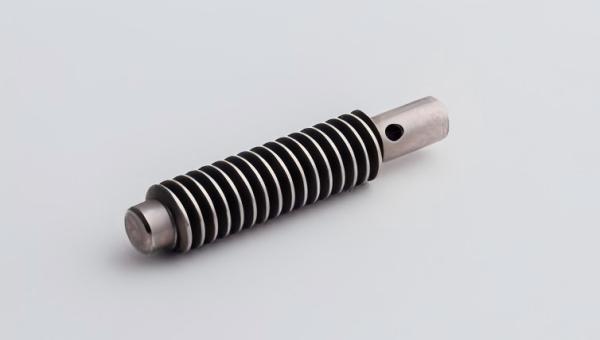Electroplating post-treatment for CNC machined products (prototypes) is a critical process to enhance appearance quality and corrosion resistance, typically includingcleaning, electroplating, polishing, and sprayingsteps. Below is the detailed process flow and key considerations:
1. Conventional Process for Electroplating Post-Treatment of CNCMachined Products
(1) Pre-treatment (Cleaning and Surface Preparation)
Purpose: Remove oil stains and impurities to ensure adhesion of the electroplated layer.
Steps:
Ultrasonic cleaning: Use solvents (e.g., alcohol, acetone) or alkaline cleaning agents to remove residual oil stains and cutting fluid from machining.
Water rinsing: Rinse with clean water to remove residual cleaning agents.
Acid pickling(optional): Perform acid pickling (e.g., with dilute sulfuric acid or hydrochloric acid) on metal parts (such as copper or aluminum) to remove oxide layers.
Drying: Use compressed air or drying equipment to blow-dry, avoiding water stains.
(2) Electroplating
Purpose: Deposit a layer of metal (e.g., nickel, chromium, gold) on the product surface to enhance gloss and corrosion resistance.
Steps:
Racking: Secure the product on a conductive rack to ensure uniform contact with the electrolyte.
Pre-plating(optional): Pre-plate a layer of nickel or copper on easily oxidizable materials (e.g., copper, zinc alloy) to enhance adhesion.
Main plating:
Nickel plating: Improves hardness and corrosion resistance, with a typical thickness of 5-20 μm.
Chromium plating: Enhances gloss and wear resistance, with a typical thickness of 0.05-0.2 μm.
Gold/silver plating: Used for parts with high decorative requirements, with a typical thickness of 0.1-1 μm.
Post-rinsing: Rinse with clean water to remove residual electrolyte.
(3) Polishing and Grinding
Purpose: Repair minor defects on the electroplated surface (e.g., pitting, scratches) to improve gloss.
Steps:
Mechanical polishing: Use sandpaper (from coarse to fine, e.g., 600-grit to 2000-grit) or polishing wheels to remove surface irregularities.
Mirror polishing(optional): For parts requiring high gloss, use polishing paste (e.g., diamond paste) for mirror finishing.
Cleaning: Clean again after polishing to avoid residual abrasive particles.
(4) Spraying (Optional)
Purpose: Add color or a protective layer to cover electroplating defects.
Steps:
Primer spraying: Enhance adhesion (e.g., epoxy primer).
Topcoat spraying: Select desired color (e.g., PVD vacuum coating, UV paint).
Drying and curing: Cure at high temperature or with UV light, depending on the paint type.
(5) Quality Inspection and Packaging
Inspection items:
: Electroplated layer thickness (measured with a thickness gauge).
Surface gloss and color consistency.
Presence of bubbles, scratches, or plating defects.
Packaging: Wrap with anti-static bags or soft materials to avoid scratches.
2. Key Considerations
(1) Material Compatibility
Metal products(e.g., aluminum alloy, copper): Require passivation or pre-plating treatment to prevent oxidation.
Plastic products(e.g., ABS, PC): Require conductive paint spraying before electroplating.
(2) Electroplated Layer Thickness Control
Too thin: Insufficient corrosion resistance and prone to wear.
Excessive Thickness: Stress accumulation leads to cracking or peeling.
Recommendations: Functional plating (e.g., anti-corrosion) thickness ≥10μm; decorative plating (e.g., bright chrome) thickness ≤0.2μm.
(3) Polishing Process Selection
Manual Polishing: Suitable for small batches and complex curved surfaces, but inefficient.
Automated Polishing: Suitable for large batches of simple parts, with high consistency.
(4) Environmental Protection and Safety
Plating solution contains heavy metals (e.g., chromium, nickel); waste liquid must be treated in compliance with regulations.
Polishing dust requires dust removal equipment to avoid inhalation.
3. Common Issues and Solutions
| Issue | Cause | Solution |
| Plating layer blistering or peeling | Incomplete pretreatment, oil stains or oxide layer not removed | Strengthen cleaning and pickling steps to ensure surface cleanliness |
| Uneven surface gloss | Uneven current density or electrolyte temperature fluctuations | Adjust plating parameters and optimize rack design |
| Scratches after polishing | Abrasive particles too large or improper operation | Gradually use finer sandpaper and control polishing pressure |
| Inconsistent plating color | Fluctuations in electrolyte composition or poor conductivity of racks | Regularly test electrolyte and ensure good conductivity of racks |
4. Summary
CNCProductThe core post-plating treatment process is:Cleaning → Plating → Polishing → Coating, with specific processes adjusted based on material, appearance requirements, and functional needs. Key success factors include:
Strict pretreatment (ensuring adhesion).
Precise control of plating parameters (thickness, current, temperature).
Reasonable polishing process (repairing defects and enhancing gloss).
Environmentally compliant waste liquid treatment.
For complex parts or special requirements (e.g., high-temperature resistance, antibacterial properties), other surface treatment technologies (e.g., anodizing, PVD coating) can be combined for further optimization.

